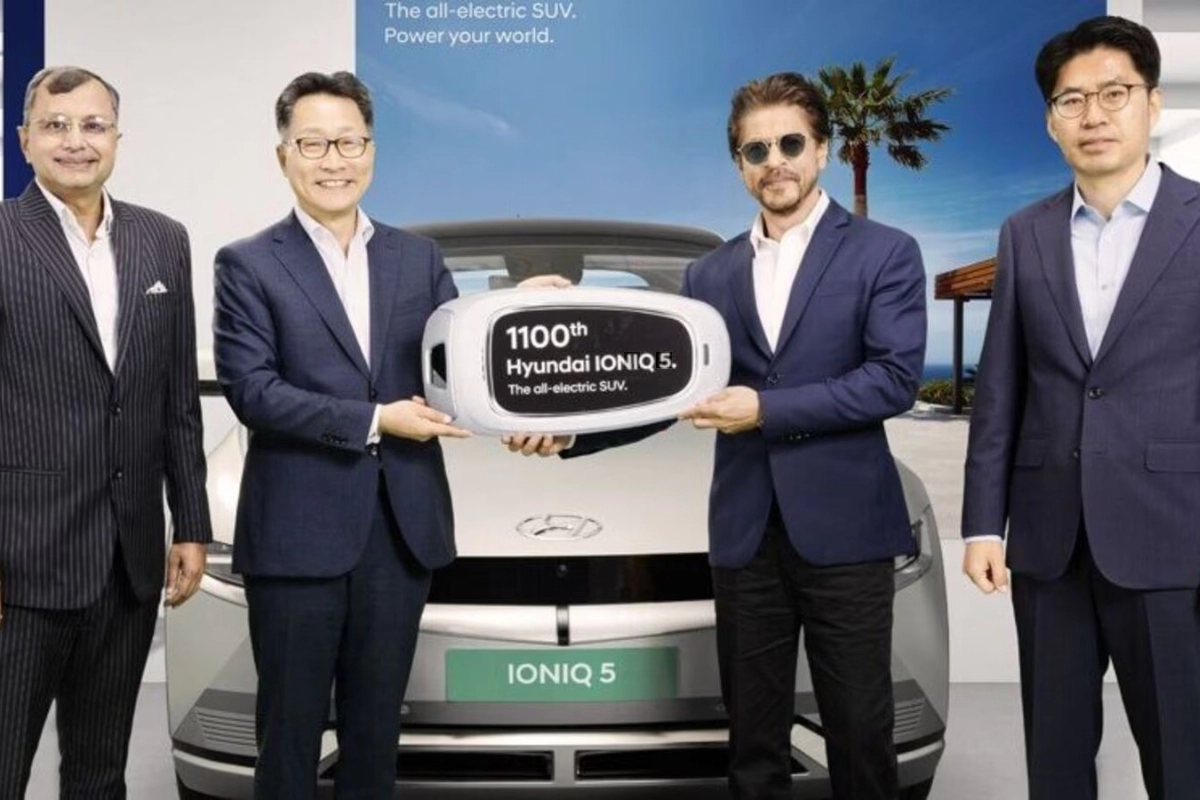Hyundai SUV: The 2024 Hyundai Kona was shown off with a variety of powertrains. All-electric, petrol hybrid, and petrol are the three primary categories of varying degrees of electrification. In addition, a more athletic N Line trim level will be offered for the petrol powertrain. The SUV is larger overall, and it has additional passenger room on the inside. Identifiable by a number of distinctive visual cues that are unique to individual powertrains Screens measuring 12.3 inches each is provided for the driver and the passenger within the cabin.
Three different drivetrain configurations
Hyundai has unveiled the next-generation Kona SUV and provided details regarding the availability of three different drivetrain configurations for the vehicle. It will be offered with petroleum -only propulsion, a petroleum -hybrid powertrain, and an electric powertrain, and the internal combustion engine (ICE) powertrain will also get an N-Line version that, as is customary, will pack greater performance.
Design
Because it now offers three distinct powertrain configurations, Hyundai is able to provide design options that are unique to each powertrain. Hyundai claims that the SUV was conceived as an electric vehicle (EV) initially, and then features were adapted to accommodate various powertrain options. This goes against the conventional tendency, which is typically the other way around.
Also Read: Uttar Pradesh: 5 arrested in Lucknow for lowering electricity metre reading
Different inserts on the intake grille, different alloy wheels, a reworked rear bumper and skid plates, and various colour schemes on the wheel arches, side mirrors, and top are some of the stylistic aspects that distinguish each powerplant from its contemporarily produced brothers.
When compared to its predecessor, the SUV’s general appearance can be described as being both larger and somewhat more rounded than before. The angular hood has been rounded out and now has a strip of daytime running lights (DRL) running across its width.
It certainly lends the front three-quarters of the SUV a lot more personality
In keeping with the normal appearance of the Kona, the main headlight unit is positioned lower on the bumper; however, on this particular model, it is integrated into the hefty squared-off wheel arch that extends toward the front of the vehicle. Although I can’t say for certain that it will appeal to everyone, I can say that it certainly lends the front three-quarters of the SUV a lot more personality.
The highly visible crease line and the thick side sills contribute to the appearance of the vehicle appearing to be much more aggressive from the side profile view. Even the alloys have a really cool appearance, and this is true regardless of the powerplant. The taillights are concealed within the lower body cladding of the SUV, much like they are at the front of the vehicle. The back of the SUV has a single LED strip that spans the hood, making it a lot more understated than the front.
Cabin
The increase in the total size and wheelbase of the SUV has translated into a greater cabin space; in fact, Hyundai has gone so far as to label it a ‘living space’ because of how much more room it provides within the vehicle. It does draw influence from the interior of the Ioniq 5 and gives increased space in the middle as a result of the gear selector being moved behind the steering wheel; nonetheless, to refer to it as a “living space” may be a bit of an exaggeration. The interior has been expanded, and it now has two screens of 12.3 inches each; one is for the driver, and the other is for the entertainment system. There is no question that the level of luxury that can be found within the cabin has increased.
Powertrain
We are going to have to wait a little bit longer until the technical specs of the next-generation Kona are made public, but we do know that it will offer a variety of engine configurations, including gas-only, hybrid, and all-electric options. In addition, a performance-oriented N Line variant with a somewhat aggressive design and returned mechanics and characteristics will be made available for the petrol-only powerplant.
The next iteration of the Kona should have a range that is greater than the 452 kilometres that is now stated for it by the Modified Indian Driving Cycle (MIDC), and it should also be compatible with rapid charging.
We believe that Hyundai will just send the electric iteration of the Kona to India, just like the current model, which only receives an electric powertrain. This is our best guess. It should come as no surprise that the price of the new model will be higher than the price of the existing model, which starts at Rs 23.84 lakh (ex-showroom) and goes up from there. It will continue to compete against rivals such as the MG ZS EV and the soon-to-be-released Mahindra XUV400.
Keep watching our YouTube Channel ‘DNP INDIA’. Also, please subscribe and follow us on FACEBOOK, INSTAGRAM, and TWITTER.












